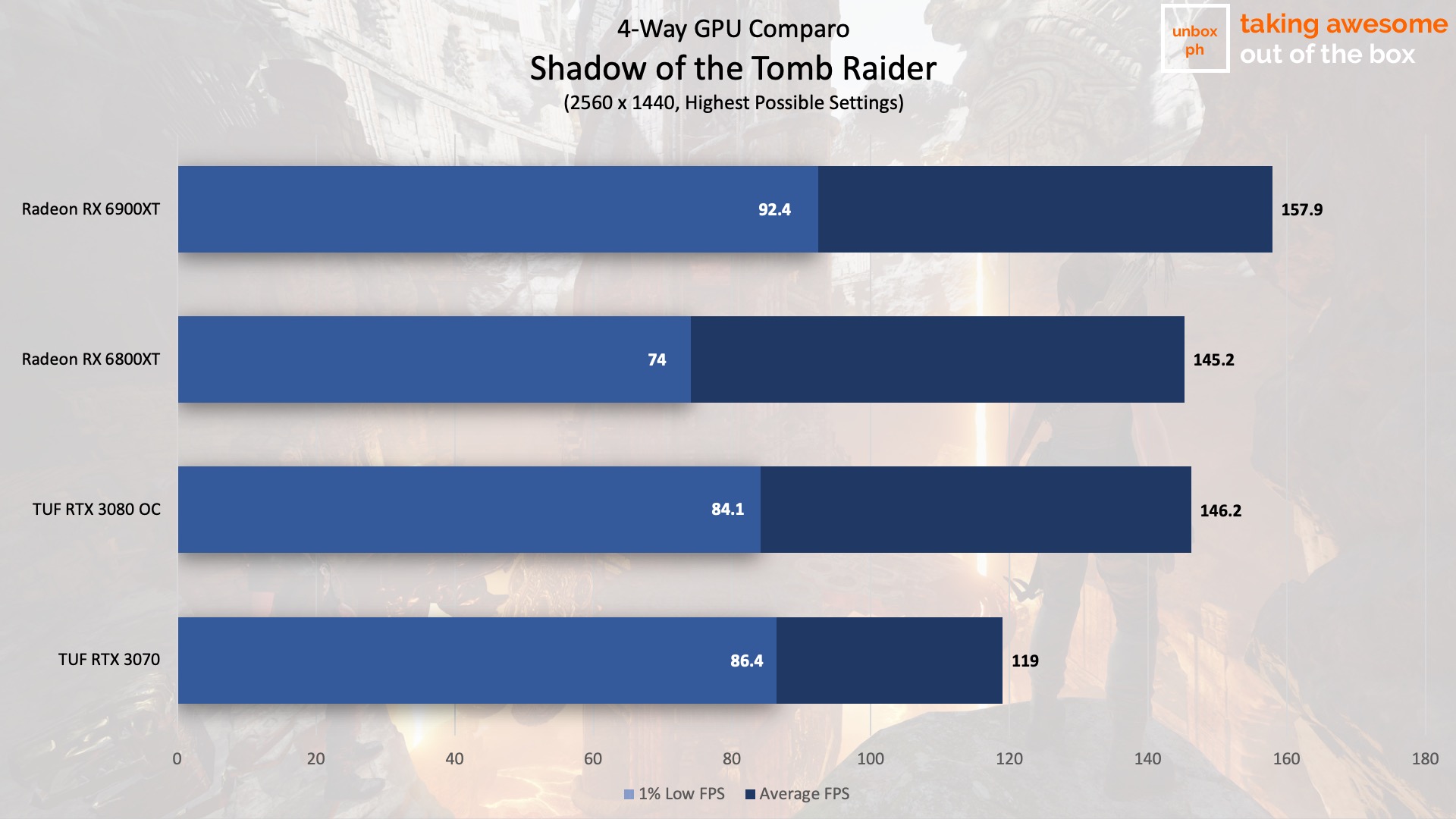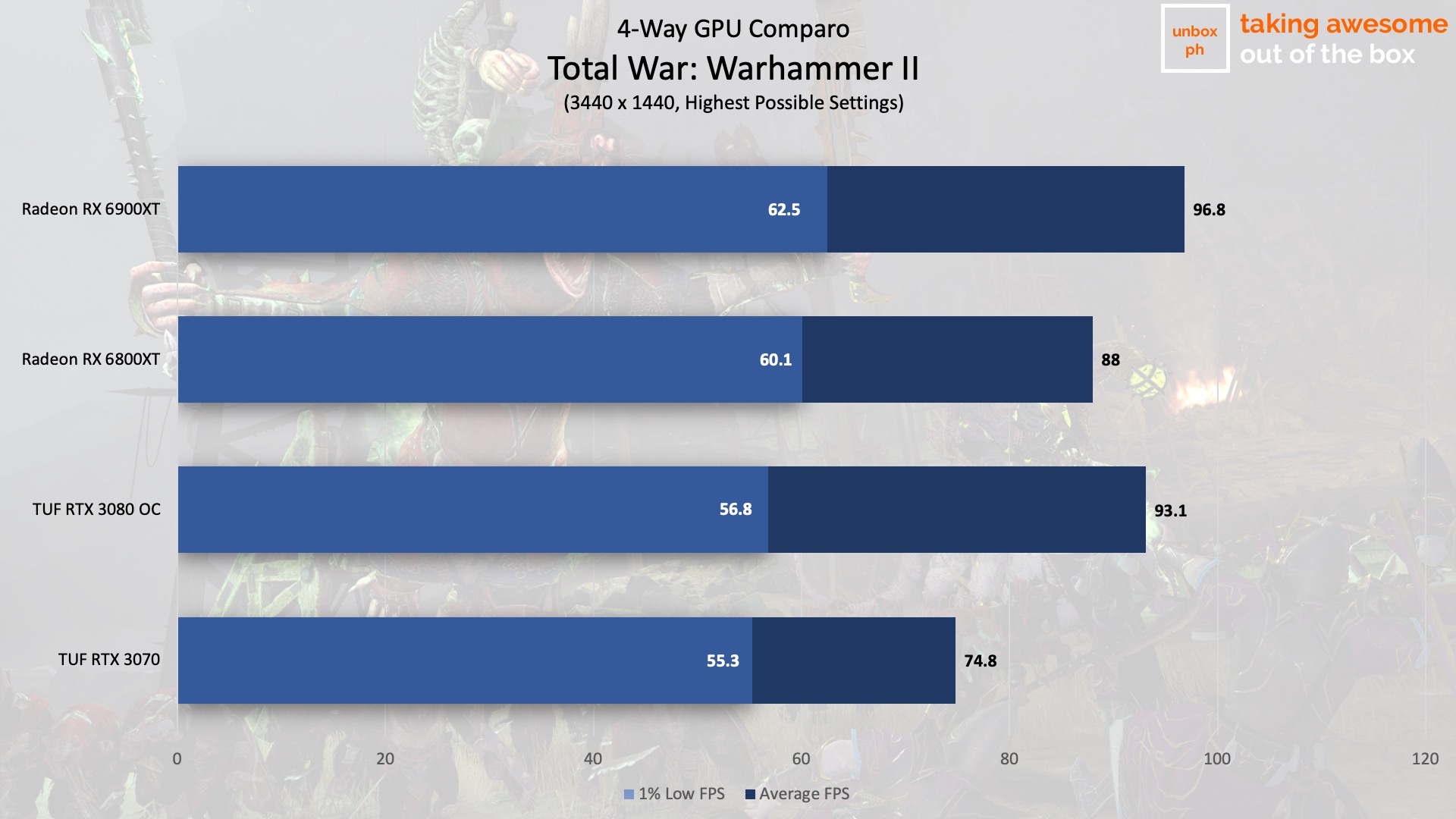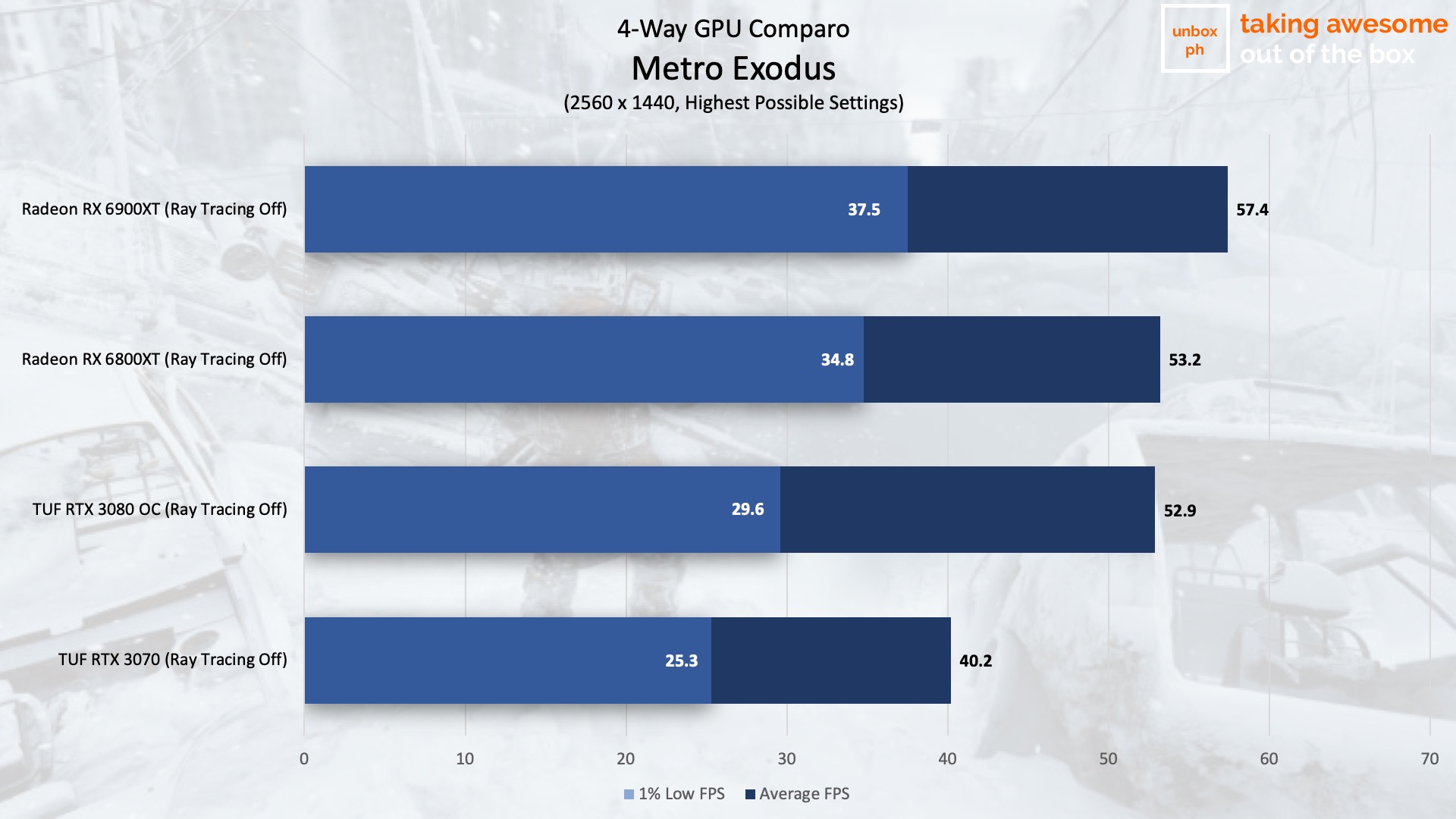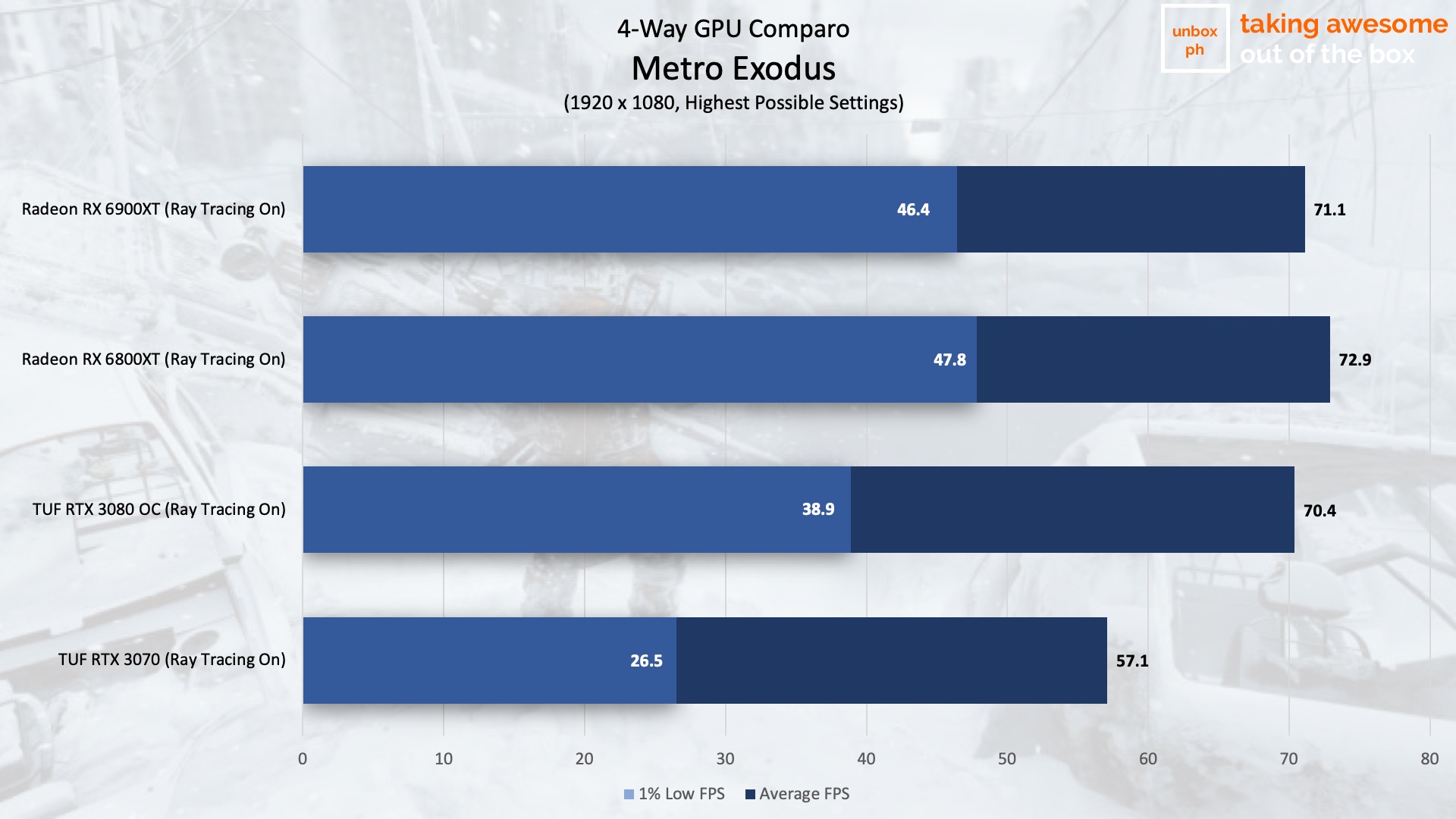
Verdict: The Radeon RX 6900 XT is the most powerful card ever released by AMD, and the red team is finally back to trading blows with NVIDIA at the very, very top-end. While it still lags behind in terms of RT performance VS NVIDIA’s top-tier card, its price tag makes it a far better purchase than NVIDIA’s $1,499 RTX 3090, though realistically you’d be better served by AMD’s Radeon RX 6800 XT instead.
The Radeon RX 6900 XT is priced at $999 (around Php 48K roughly converted) in the US for the reference model. No local pricing for this card is available as of yet.
Pros
- Power-efficient for the performance it delivers
- Faster than the RTX 3080
- Can get even more performance via SAM
Cons
- Small performance increase VS the RX 6800 XT
- Can’t match RT performance of NVIDIA’s cards
- Expensive
The biggest of the Big Navi cards is finally here: AMD’s Radeon RX 6900 XT is the company’s first halo product in years and is being marketed as the red team’s answer to NVIDIA’s RTX 3090 which is priced around $500 higher. But does the Radeon RX 6900 XT have what it takes to be the best? Let’s find out:

Design:
If you’ve seen our Radeon RX 6800 XT review, you already know what to expect with the packaging of AMD’s biggest boi. The only difference here is that AMD includes a nice mousemat-like covering on it when you get it which doesn’t ship with the Radeon RX 6800 XT.

As for the design of the card, it’s virtually identical to the RX 6800 XT. You’re still looking at a beefy, 2.5-slot design cooler with triple fan configuration as well as a normal 8-pin connector for power here.

Only the fans and the power connectors are made out of plastic on the exterior – everything else is made of metal, which is part of the reason why the thing weighs around 1.5 kilos.

As for connectors, you’re looking at 2 x DP 1.4, 1 x HDMI 2.1, and a single USB-C connector.

Architecture:
I’m not going to go into another deep dive into AMD’s new RDNA 2 architecture for the RX 6000 series cards, suffice to say that the new architecture uses a 7nm process as well as a whole slew of architectural improvements to achieve the performance that the new family of cards achieves.
Like the Radeon RX 6800 XT, the Radeon RX 6900 XT is able to leverage AMD’s SAM or Smart Access Memory feature if you’re using a compatible B550 series or X570 board. SAM allows the CPU to have direct access to the memory on the GPU, bypassing the usual 256MB limit that’s usually present, improving performance, which should also result in higher frames.
You’re looking at a potential 5% to 15% increase in performance here, though take note that SAM improvements are very game dependent. We’re not including SAM performance numbers in this review though – you can check out our comprehensive review of the RX 6800 XT to see what kind of % improvement you can expect.
As for the actual difference in the innards of the RX 6800 XT VS its bigger brother, the RX 6900 XT, you’re looking at eight additional compute units (CUs), bringing the total shader count to 5,120 as opposed to 4,608. Aside from that though, many of the same features are the same compared to the supposedly lower-tier model: it has the same clocks, memory, L3 cache, and cooler.

The RX 6900 XT has ray tracing capabilities just like the RX 6800 XT but as with its sibling, its RT performance is still behind what NVIDIA’s capable of in its RTX 3000 series cards, that’s understandable considering this is AMD’s first go at the whole ray-tracing thing.
The RX 6900 XT is rated for around 300W and AMD suggests you use an 850W power supply with it. We used an excellent 850W power supply from Corsair for the test, though other reviewers said they got by with a 750W PSU during the review.
Performance and benchmarks
Test setup for our review remained the same compared to the Radeon RX 6800 XT: a Ryzen 9 5950X processor, along with 16GB of T-Force XTREEM ARGB 3200MHz memory, AORUS NVMe Gen4 SSD (2TB), and a Cooler Master ML240L AIO along with the 850W PSU from Corsair.
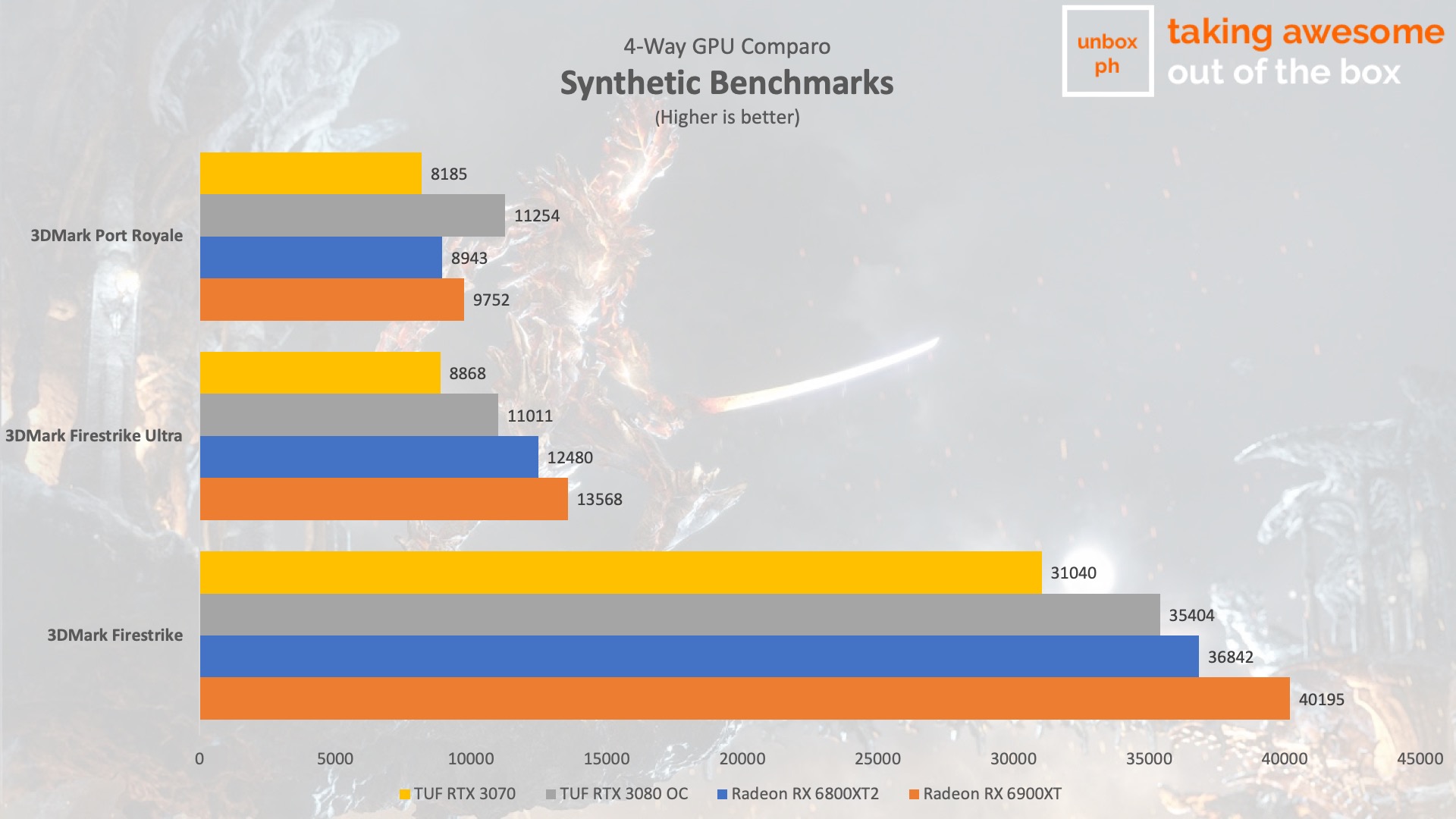
The rest of the games are identical from our previous GPU reviews for a true apples-to-apples comparison in performance. Let’s take a look at the results:
The RX 6900 XT delivers better performance VS the cheaper RX 6800 XT, but not by much. At most, you’re looking at 16% performance (1440p on Horizon Zero Dawn) or as small as 4.3% (3440 X 1440 in Godfall).
That’s not really a big jump, especially since you’re looking at a pretty steep price increase from the Radeon RX 6800 XT.
And like we mentioned earlier, the RX 6900 XT still lags behind NVIDIA’s RT capabilities, which is understandable, considering this is AMD’s first rodeo as far as ray tracing is concerned.
Power and thermals
Despite the increased performance of the RX 6900 XT over the RX 6800 XT, the power draw was more or less the same for the card. HWiNFO64 showed a reported power draw of around 302W for the card on 4K games, which is far lower than the 320W TDP on the RTX 3080, as well as the 350W TDP on the RTX 3090.
That’s incredible power efficiency in the part of AMD, which has managed to deliver more performance per watt compared to NVIDIA’s offerings.
As for thermals, it’s not surprising that the card recorded the same peak temperatures as the RX 6800 XT since they’re using the same cooler. We recorded peak temps of 83 degrees Celcius while the card was installed in a case with a 30 degree Celcius ambient temperature.
You can of course play with the fan curve a little bit to drop those temps down since the normal curve is on the conservative side.

Conclusions and wrap-up
Looking at the card’s performance, it’s only marginally better than the RX 6800 XT, delivering performance increases that don’t go past 20% VS AMD’s own high-end card in certain games.
It’s also slightly behind NVIDIA’s RX 3000 series in terms of ray-tracing performance, though not everyone cares about RT, and it’s still a feature that’s not present in all games currently. Rasterization performance is still the most important feature of a GPU no matter what NVIDIA says, and in that regard, the RX 6900 XT shines.
The Radeon RX 6900 XT is aimed at enthusiasts that want top-tier performance from a GPU that don’t care about RT and also don’t want to pay ridiculous prices for NVIDIA’s RTX 3090, which retails for around the price of a car downpayment nowadays. While that $1000 price tag for the RX 6900 XT will be a bit more when taxes and duties are factored in, it’s still going to be less than what NVIDIA’s AIB partners are asking for their top-tier RTX 3090.
That being said, if you’re dead set on buying a card from the red team, you’ll be better served with their Radeon RX 6800 XT and applying an overclock instead.



